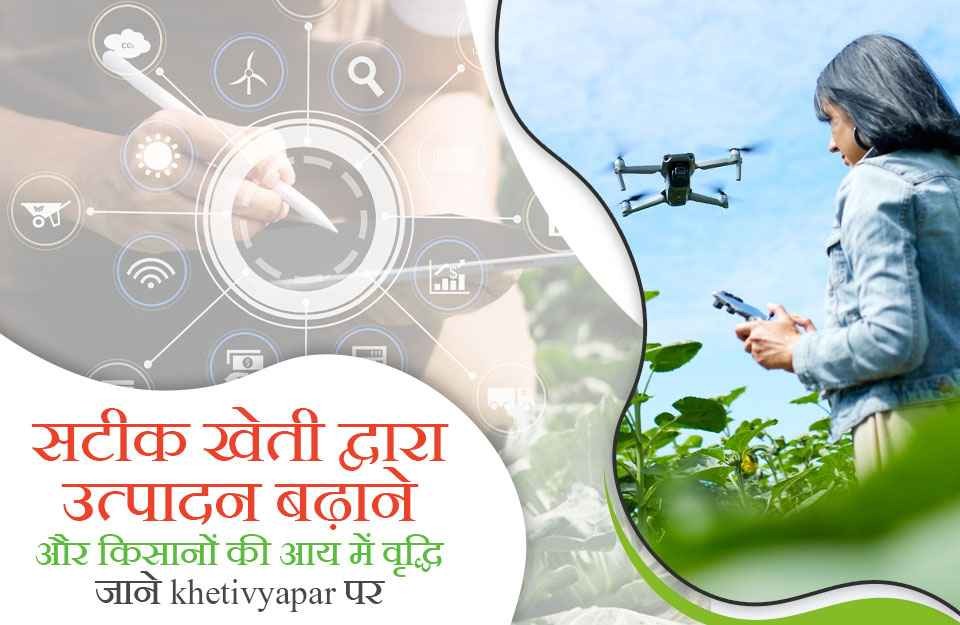
Considering the expanding agricultural land, depleting water resources, rising input costs, and the growing demand for food production, precision farming emerges as a potential solution for sustainable agricultural production and increasing farmers' income. Strengthening farmer awareness and promoting widespread adoption of agricultural technology are essential components for the success of precision farming.
The demand for food production is on the rise in India due to the increasing population. From around 50 million tons in 1950-51 to a record 330 million tons in 2022-23, food grain production has seen significant growth. Irrigation plays a crucial role in this increase, with the irrigated crop area expanding from about 18 percent to over 55 percent in the past 60 years. The use of chemical fertilizers has also increased substantially, from about 2 kilograms per hectare in the 1960s to an average of approximately 141 kilograms per hectare nationwide in 2022-23. Major crop-producing states like Andhra Pradesh, Haryana, Punjab, Uttar Pradesh, and Telangana use fertilizers exceeding 200 kilograms per hectare. However, there is a growing imbalance in the use of nitrogen, phosphorus, and potassium (NPK) fertilizers, which needs to be addressed.
Discover a cutting-edge approach to boost agricultural productivity through the latest advancements in technology and farming practices. Precision farming ensures the precise utilization of inputs to maximize both the quality and quantity of output. This data-driven and technology-enabled approach to crop production management aims at achieving optimal yields while minimizing input costs. Our methodology involves the comprehensive collection, management, and analysis of data from various sources, including soil characteristics, weather patterns, crop performance, pest infestations, and more. Leveraging tools such as remote sensing, variable rate technology, Internet of Things (IoT), Global Positioning System (GPS), drones, and sensors, we optimize farming operations for efficiency and effectiveness. Moreover, with rapid advancements in machine learning and artificial intelligence, we're unlocking new possibilities in precision farming. From predictive pest outbreak forecasting to the automation of irrigation processes, these technologies are revolutionizing the way we farm.
Precision farming presents a viable solution for lowering costs for farmers while simultaneously boosting income and profitability. Through the precise application of chemical inputs and water, precision farming plays a crucial role in mitigating environmental pollution and safeguarding natural resources. According to a report by the Energy, Environment, and Water Council, precision farming has yielded remarkable increases in crop productivity, ranging from 30-200% across various crops, owing to the adoption of precision irrigation and fertilization techniques. A pilot project conducted in Telangana showcased a 21% surge in yield per acre, a 9% reduction in pesticide usage, a 5% decrease in fertilizer consumption, and an 8% enhancement in production prices attributed to improved quality. The implementation of precision farming necessitates comprehensive data encompassing soil moisture levels, soil nutrient profiles, crop health indicators, pest infestation patterns, weather forecasts, and more. In addition to tools and equipment for remote sensing and real-time monitoring of soil conditions, adequate financial resources are imperative. Furthermore, the adaptation of precision farming practices to smaller-scale farms poses additional complexities.
Fostering Technical Awareness among Farmers: The promotion and dissemination of technical knowledge among farmers are of paramount importance. While simple yet precise farming techniques like micro-irrigation and fertigation can be acquired and applied with basic training, the utilization of advanced technologies such as remote sensing, drones, and sensors for real-time measurement of soil moisture and nutrients necessitates specialized training and dedicated personnel. Precision farming is rapidly gaining traction on a global scale. Presently, there are 22 Precision Farming Development Centers (PFDCs) situated across various agricultural-climatic zones nationwide. These centers offer training, technology transfer, testing, and tailored demonstrations catering to specific crop cultivation areas. However, the widespread adoption of precision farming remains largely confined to regions with minor irrigation and horticultural crops.
Utilization of Various Technologies in Precision Farming: